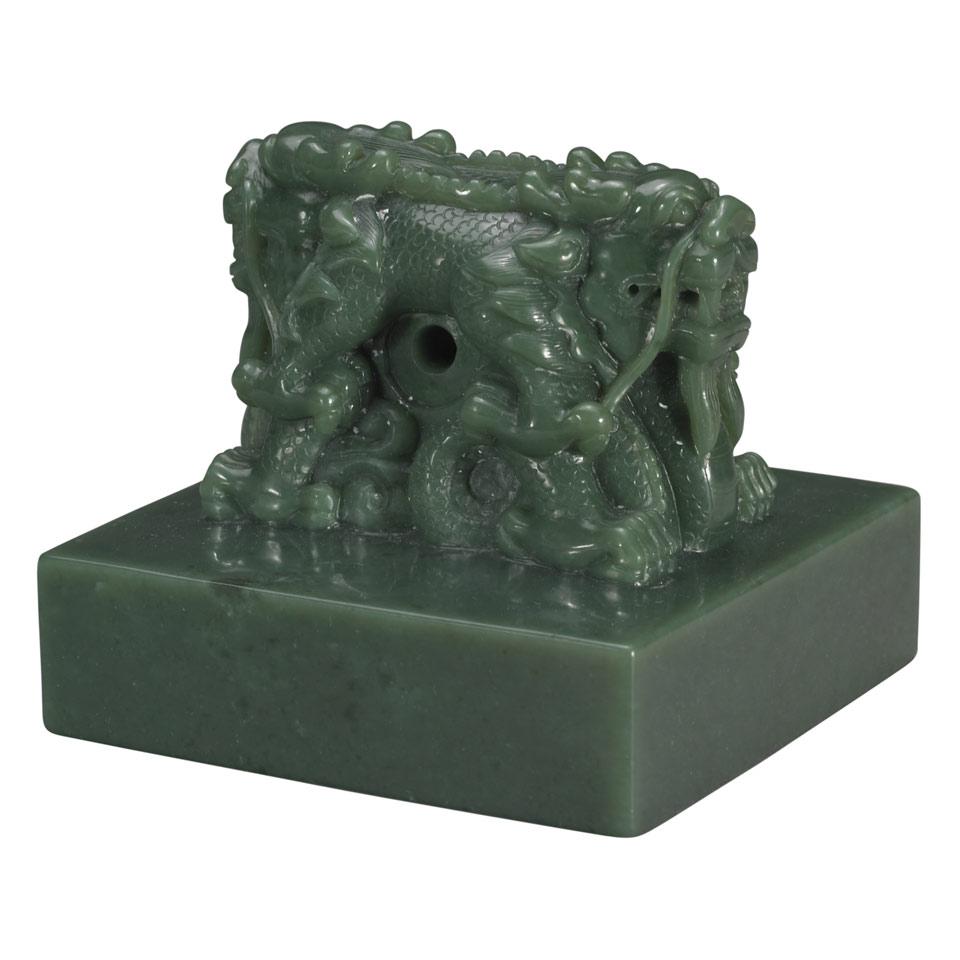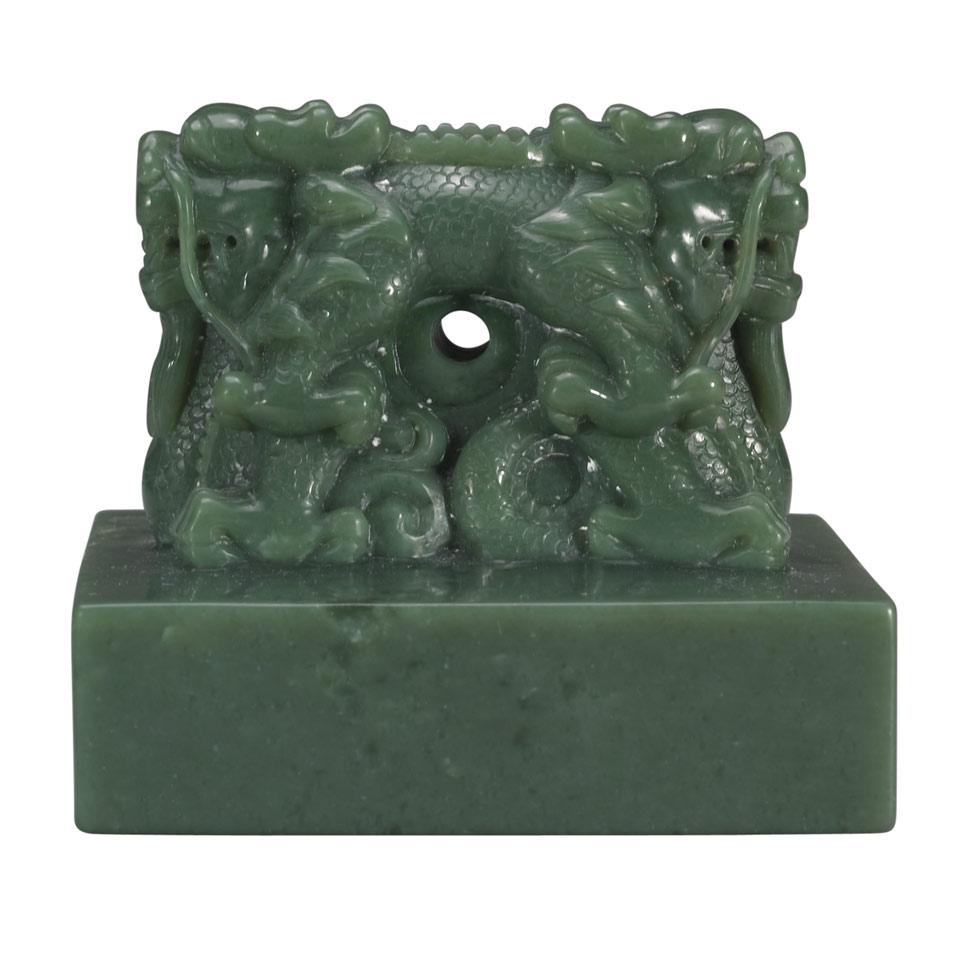Lot 488
Khotan Green Jade ‘Huangdi Xinbao’ Seal, Qing Dynasty, 19th Century

Lot 488 Details
Khotan Green Jade ‘Huangdi Xinbao’ Seal, Qing Dynasty, 19th Century
Two well-carved dragons with detailed scales and expression, their body pierced with an aperture and seated on a low square form base
3.9" x 4.3" x 4.3" — 10 x 11 x 11 cm.
Huangdi xin bao
Estimate $30,000-$50,000
Additional Images

Provenance:
Purchased from Hartman Rare Art, New York
Note:
Official Qing Court seals of dragon and square plinth form were the embodiment of Imperial authority - power that could be both maintained and bestowed. Ever since the reign of the Kangxi Emperor (1662-1722), larger sized seals, consisting of a squared base with two addorsed dragons and hole, have become standard for official documents. By the time of the Qianlong era (1736-1795), large seal imprints can also be found affixed to large paintings to show Imperial patronage. Spinach green and white jade (nephrite) appear to have been the preferred material for production of this form of seal.
The dimensions of these jade seals tend to follow a pattern with the width of the square base being slightly greater than the twice its height (2.1:1) and further, the width equaling the height including the dragon bodies (1:1) to form a square silhouette. The decorative carved dragon and austere base represent the Emperor's power (dragon) over the Earth (base).
The quality of the present carving is stylistically consistent with Imperial seals of the 19th Century. However, the dimensions of the base reveal that this seal has had two lives. The dragon carving and the carving of the seal face are dissimilar in quality, which suggests that the original seal has been defaced at some point, usually accomplished by ceremonially smashing one corner. After the damage, it is possible that the seal was cut down to remove the broken corner, re-carved, and then reused. The result is a seal with slightly shorter base and a mysterious past.
CONDITION DETAILS
PLEASE NOTE THIS IS A PREMIUM LOT. ANY BIDDING ON THIS LOT REQUIRES PRE-APPROVAL FROM THE ASIAN ART DEPARTMENT AT LEAST 48 HOURS PRIOR TO THE SALE. Please contact [email protected] or 416.847.6185 for more information




